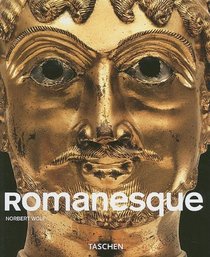Search -
Romanesque Art (Basic Art)
Romanesque Art - Basic Art
The first universal style of the European Middle Ages Reaching its peak in the 11th and 12th centuries, the Romanesque movement was marked by a peculiar, vivid, and often monumental expressiveness in architecture and fine arts. The main centres were located in Italy, France, the German-language countries, Spain, and England, though the voices of... more »
The first universal style of the European Middle Ages Reaching its peak in the 11th and 12th centuries, the Romanesque movement was marked by a peculiar, vivid, and often monumental expressiveness in architecture and fine arts. The main centres were located in Italy, France, the German-language countries, Spain, and England, though the voices of... more »
ISBN-13: 9783822854464
ISBN-10: 3822854468
Publication Date: 10/1/2007
Pages: 95
Rating: ?
ISBN-10: 3822854468
Publication Date: 10/1/2007
Pages: 95
Rating: ?
0 stars, based on 0 rating
Genres:
- Arts & Photography >> History & Criticism >> General
- Arts & Photography >> History & Criticism >> Regional >> European
- Arts & Photography >> History & Criticism >> Schools, Periods & Styles >> Ancient & Classical
- Arts & Photography >> History & Criticism >> Schools, Periods & Styles >> Byzantine
- Arts & Photography >> History & Criticism >> Schools, Periods & Styles >> Medieval
- Arts & Photography >> History & Criticism >> Schools, Periods & Styles >> Renaissance
- Arts & Photography >> Art >> General




